-
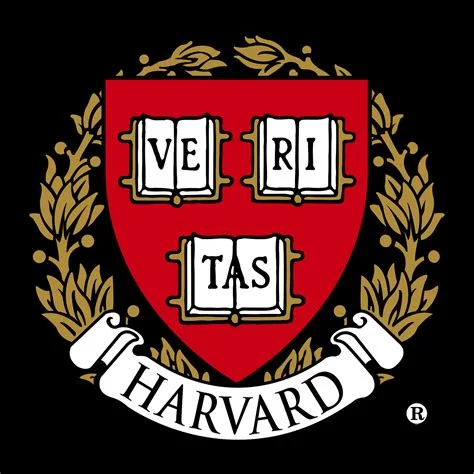 Thomas Kuhn was born in Ohio in 1922 and later earned his PhD in physics from Harvard in 1949 also taking an interest in the history and philosophy of science.
Thomas Kuhn was born in Ohio in 1922 and later earned his PhD in physics from Harvard in 1949 also taking an interest in the history and philosophy of science. -
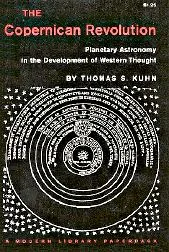 Thomas Kuhn provides a historical review of the transition from a geocentric to a heliocentric system introduced by Copernicus. He highlights how this shift transformed the field of astronomy with just one theory. This book provides the basis for his later work "The Structure of Scientific Revolutions" as an example to support his idea of paradigm shifts. Kuhn, Thomas S. The Copernican Revolution: Planetary Astronomy in the Development of Western Thought. Harvard UP, 1957.
Thomas Kuhn provides a historical review of the transition from a geocentric to a heliocentric system introduced by Copernicus. He highlights how this shift transformed the field of astronomy with just one theory. This book provides the basis for his later work "The Structure of Scientific Revolutions" as an example to support his idea of paradigm shifts. Kuhn, Thomas S. The Copernican Revolution: Planetary Astronomy in the Development of Western Thought. Harvard UP, 1957. -
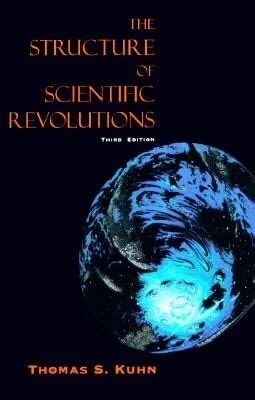 Thomas Kuhn introduces the idea of paradigm shifts the concept of normal science, and incommensurability in this book. Here is a link to a YouTube video that goes into more detail of his most famous work:
Thomas Kuhn introduces the idea of paradigm shifts the concept of normal science, and incommensurability in this book. Here is a link to a YouTube video that goes into more detail of his most famous work:
https://www.youtube.com/watch?v=L70T4pQv7P8 The Structure of Scientific Revolutions: 50th Anniversary Edition. University of Chicago Press, 2012. -
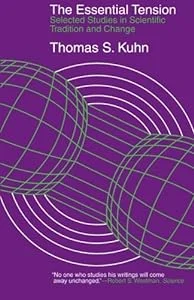 In this book, Kuhn talks about the tension between tradition and innovation in scientific research and how innovation is important for revolutions to happen. The Essential Tension: Selected Studies in Scientific Tradition and Change. 1977.
In this book, Kuhn talks about the tension between tradition and innovation in scientific research and how innovation is important for revolutions to happen. The Essential Tension: Selected Studies in Scientific Tradition and Change. 1977. -
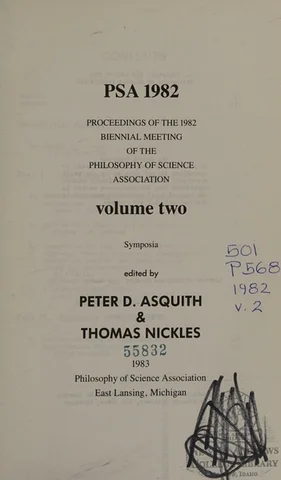 An essay by Kuhn that was published in "Proceedings of the Biennial Meeting of the Philosophy of Science Association" in 1982 that addresses criticisms and goes into more detail about incommensurability. He talks about the incompatibility of language across paradigms. Kuhn, Thomas S. “Commensurability, Comparability, Communicability.” PSA: Proceedings of the Biennial Meeting of the Philosophy of Science Association, vol. 1982, 1982, pp. 669–88. JSTOR, http://www.jstor.org/stable/192452.
An essay by Kuhn that was published in "Proceedings of the Biennial Meeting of the Philosophy of Science Association" in 1982 that addresses criticisms and goes into more detail about incommensurability. He talks about the incompatibility of language across paradigms. Kuhn, Thomas S. “Commensurability, Comparability, Communicability.” PSA: Proceedings of the Biennial Meeting of the Philosophy of Science Association, vol. 1982, 1982, pp. 669–88. JSTOR, http://www.jstor.org/stable/192452. -
 Thomas Kuhn died in 1996 after being diagnosed with lung cancer. His contributions to the philosophy of science still spark debates and discussions up until this day. He also advocated for the teaching of the history of science in classrooms so that students will learn about the development of scientific ideas over time including the debates and controversies that occurred along with them.
Thomas Kuhn died in 1996 after being diagnosed with lung cancer. His contributions to the philosophy of science still spark debates and discussions up until this day. He also advocated for the teaching of the history of science in classrooms so that students will learn about the development of scientific ideas over time including the debates and controversies that occurred along with them.
